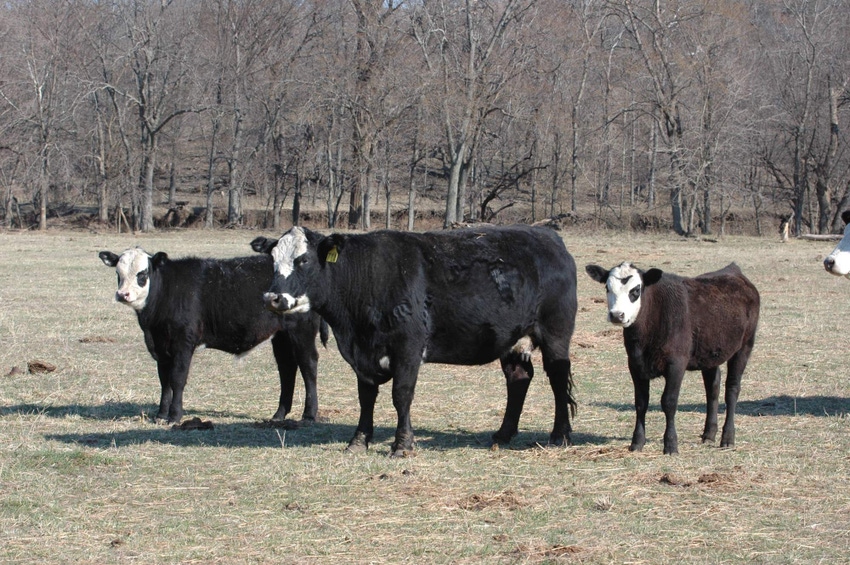Herd expansion appears to be slowing
Beef cowherd expansion is poised to continue this year, but year-to-year growth in replacement females suggest the pace is waning.
February 18, 2017

Although the nation's beef cowherd likely will continue to grow this year, there are indications that expansion is slowing, albeit about a year later than some expected.
"The biggest surprise in composition of the cattle herd at the beginning of 2017 was the number of heifers being held for beef cow replacement purposes," say analysts with the Livestock Marketing Information Center (LMIC), in the latest Livestock Monitor. "That category of the cattle herd was estimated by the National Agricultural Statistics Service (NASS) to be up 1% from a year earlier. Market expectations were generally for a decline of 5%-7%, driven by the trend in calf prices, which posted a 50% decline from the peak in the spring of 2015 to the fall of 2016."
"The inventory of beef replacement heifers relative to the beef cow inventory is the best indication of future beef herd expansion," says Derrell Peel, Extension livestock marketing specialist at Oklahoma State University, in his weekly market comments. "The Jan. 1, 2017 ratio of replacement heifers to the cowherd was 20.6%, down slightly from one year ago. The 2016 ratio of 21.0% was the highest in 48 years. The heifer ratio has been sharply higher since herd expansion began in 2014 with the last three years having the three highest levels since 1969. The four-year average since 2014 is 20.4%. The average for the 25 years prior to 2014 was 17.3%. The current ratio of beef replacement heifers to the cow herd suggests that herd expansion will continue relatively aggressively in 2017."
The 6.4 million head of beef replacement heifers at the beginning of the year was 1.2% more than a year earlier.
At the same time, analysts with USDA's Economic Research Service (ERS) explain in the latest monthly Livestock, Dairy and Poultry Outlook that the percentage of beef heifers retained for breeding is declining.
"Heifers for beef and milk cow replacement are often used as barometers of herd expansion or contraction rates," ERS analysts explain. "Heifers for beef cow replacement were 1% higher than last year but down from the 4% and 3% increases achieved in 2015 and 2016, the first two years of this expansion...Producers also indicated that they expect only 2% more beef heifers to calve during 2017, down from increases of 7% and 6% in 2015 and 2016."
Southern Plains lead expansion
For perspective, there were 31.2 million beef cows at the beginning of the year, according to USDA's Cattle report. That was 3.5% more than the previous year. Peel explains the nation's beef cow herd grew 7.3% since the recent ebb at the beginning of 2014.
Whether you call it expansion or simple restocking from the extended drought, the lion's share of beef cow additions over the last few years are in the Southern Plains states of Kansas, Oklahoma and Texas.
"The Southern Plains is the largest beef cow region with 26% of the national total (8.13 million head in 2017) and has added the most beef cows of any region since expansion began," Peel explains. "The region added 14.1% to the beef cow inventory, accounting for 47.3% of the 2.12 million head of additional beef cows nationwide since 2014."
Yet, Peel points out the current beef cow inventory in Texas at the beginning of the year was still 600,000 head shy of pre-drought levels. Even with continued expansion this year, he adds that it may be unlikely for the beef cow inventory there to return to pre-drought levels.
In terms of geography, LMIC analysts say, "Individual states that reported change contrary to expectations (beef replacements) were North Dakota (+23,000) head, South Dakota (+20,000), Montana (+20,000), Texas (+20,000), Kansas (+20,000), and Missouri (+15,000). States apparently showing more sensitivity to declines in cattle prices reported heifers for beef cow replacement below a year ago: Oklahoma (-15,000) head and Idaho (-20,000)."
In the case of Oklahoma, Peel points out producers there expanded rapidly since 2013; the beef cow inventory there is the most since 1984. He adds the inventory in Kansas is also the most since 1984.
About the Author(s)
You May Also Like




.png?width=300&auto=webp&quality=80&disable=upscale)
